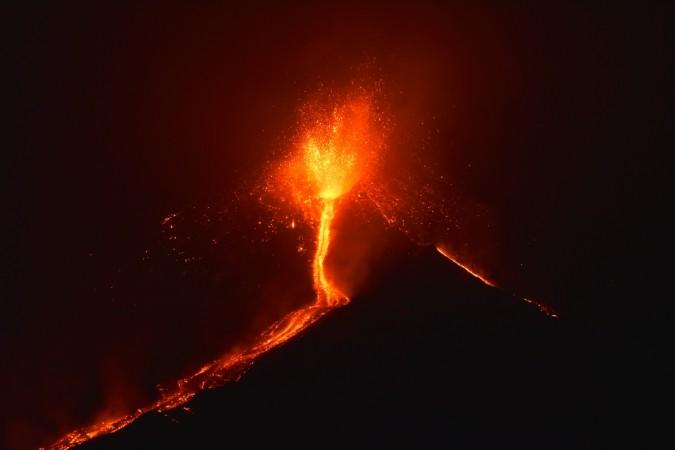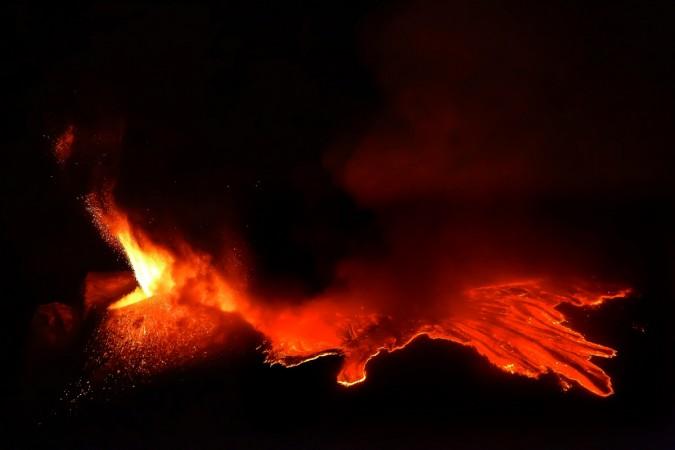
Mount Etna, one of the world's deadliest volcanoes, may not be a real volcano after all, according to a new study, which said that the mountain, located on the east coast of Italy's island of Sicily, could just be "a giant hot spring."
Despite spewing tonnes of molten rock, Mount Etna -- with mostly water feeding its cone -- also emits more than 7 million tonnes of steam, carbon dioxide (CO2) and sulphur dioxide (SO2) every year. This peculiarity has puzzled Carmelo Ferlito, a geologist at the University of Catania in Sicily, who claims that Etna is more like a hot spring rather than a "true volcano."
In a new study published in the journal Earth-Science Review, Ferlito has questioned why the 3,329-metre high mountain does not seem to produce enough lava for the amount of gas it belches out. The research was first spotted by New Scientist.
It is widely believed that water, CO2 and SO2 are produced as magma loses pressure as it rises to the surface through the volcano's vent. Ferlito said that for this to be true, Etna would need to eject 10 times more lava than it does at present.
Ferlito's research is primarily based on the idea the amount of different materials found inside Mount Etna is not explained by current theories. He said in the new study that the chamber, which feeds Mount Etna, contains only 30 percent molten rock while the rest of the space is filled with huge amounts of CO2, water and SO2.
"The Etnean volcano works in a similar way to a gigantic hot spring, with huge amounts of 'hot water' and other gasses constantly rising through the lithosphere of eastern Sicily," Ferlito said.
As far as the source of the water to feed Mount Etna's eruptions is concerned, Ferlito theorised that the water could come from the pockets inside the Earth. To support his theory, he also referred to the growing evidence of a huge amount of water in the Earth's mantle.

Other geologists, however, are not convinced with Ferlito's theories.
Kayla Iacovino, a volcanologist from Arizona State University, told New Scientist that Ferlito's study is "inventive." In 2015, Iacovino proposed an alternative theory suggesting that the gas originates from deep within the Earth as magma releases producing gas.
Due to its history of recent activity and nearby population, Mount Etna has been designated a Decade Volcano along with 15 other volcanoes by the International Association of Volcanology and Chemistry of the Earth's Interior.
In March 2017, 10 people were injured in a volcanic eruption of Mount Etna when flowing magma came in contact with the snow and triggered an explosion.

















